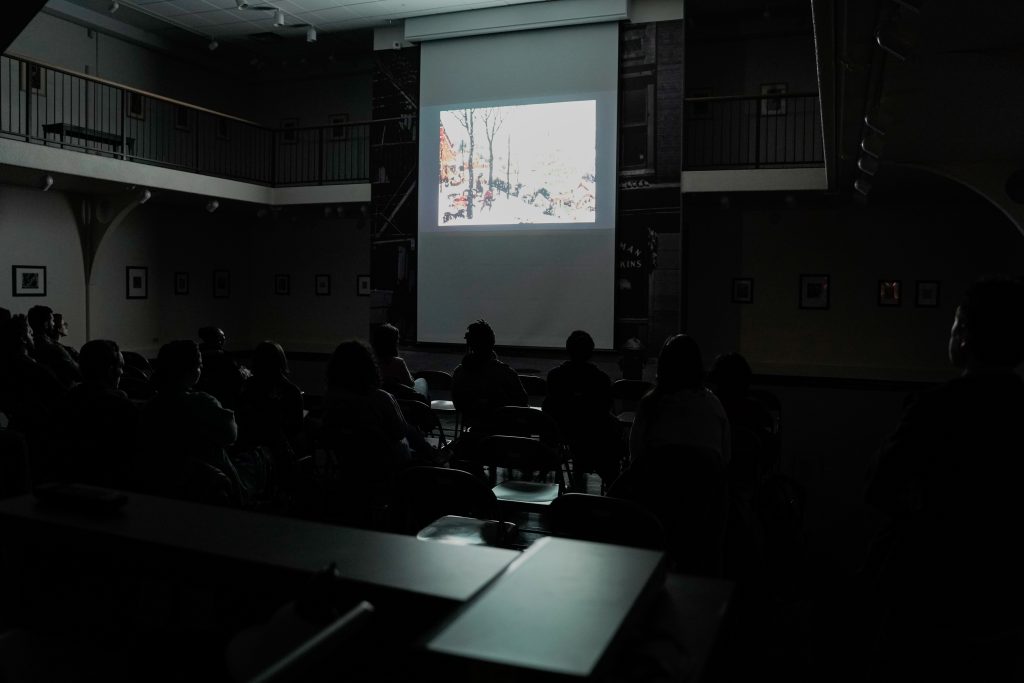On Friday, Oct. 19 and Sunday, Oct. 21 from 7:30 to 9:30 p.m., Harpur Cinema presented “24 Frames,” the final film by Iranian poet, photographer and director Abbas Kiarostami. While Harpur Cinema films are usually shown in Lecture Hall 6, this film was shown in the main gallery of the Binghamton University Art Museum.
The special event was a collaboration between the museum and the Harpur Cinema program, similar to the program’s screening of “Faces Places” in spring 2018. Last semester’s collaboration was based on a linkage between the content of the film and the content of the museum’s visual art exhibition. This semester, “24 Frames” was shown alongside an exhibition of urban photography by N. Jay Jaffee.
Chantal Rodais, a lecturer in the cinema department, said the film was not selected because of a thematic similarity to the art, but because of its reliance on the medium of photography.
“I thought this film was perfect because it starts from the still image and then inserts motion, so I thought that would be the perfect link between the images here and this work,” she said.
Kiarostami’s film was constructed using still photographs instead of being filmed with a movie camera. Conceptually riffing off the standard speed of a film, 24 frames per second, it extends the life of 24 images to fit an almost two-hour running time. Each frame is a still photograph taken by Kiarostami, digitally animated with motion and sound. Most of the shots are of animals and landscapes, set to sonic backdrops that include distant traffic noises, pieces of music and animal vocalizations.
Harpur Cinema screenings always begin with a student film and an introduction by Rodais. “Cold Light,” a short film by Benjamin Patch, a senior majoring in cinema, was selected to be shown before this feature film.
“I think the still images that the feature film was based on are very similar in the aesthetics of what I made with ‘Cold Light,’” Patch said. “The image slowly unfolds before your eyes, just like in the feature film.”
Each semester, Harpur Cinema’s film lineup is united by a theme, and this semester’s theme is “communities.” Rodais said that while many of the narrative films in the series have portrayed communities of race, gender, class or political affiliation, Kiarostami’s film represents the community of the arts.
“Here, he crosses boundaries,” she said. “He’s a filmmaker working with photography, and the film makes us cross these boundaries between photography and the moving image.”



